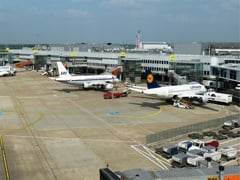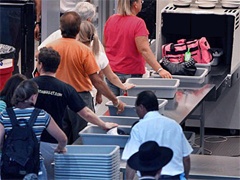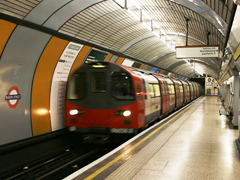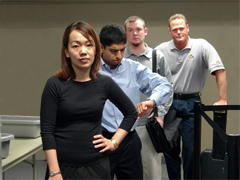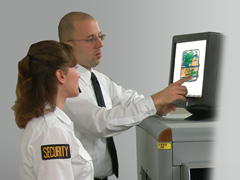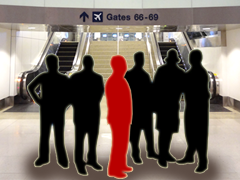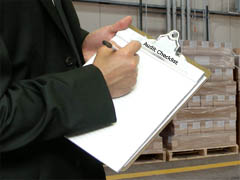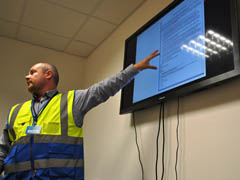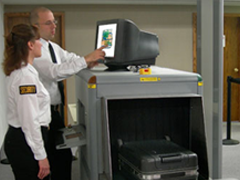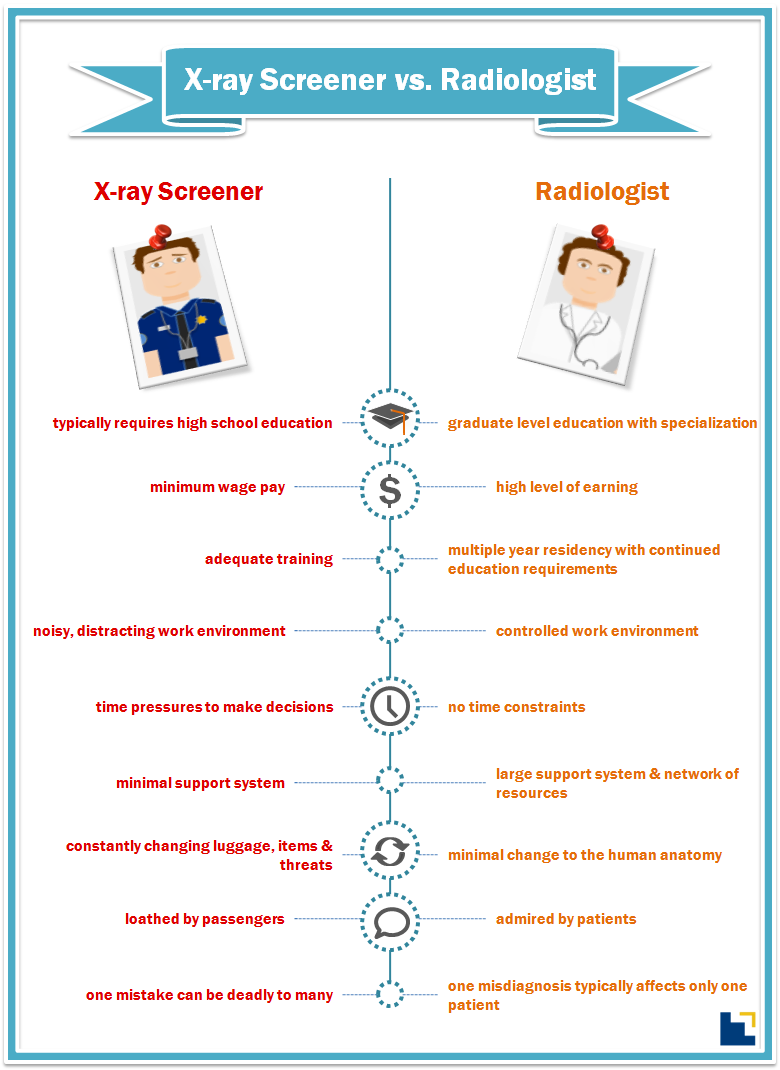Aviation makes up a substantial part of the transportation industry. Its size, impact, integration and use by countries all over the world make it vulnerable to attacks. Over the years, we’ve witnessed persistent threats to aviation and recognize that they will continue as long as there are people who want to cause harm to the air industry.
The people organizing and carrying out criminal activities are rapidly becoming more sophisticated with their methods and techniques. That’s why we all need to be aware of emerging threats to aviation security.
Read More
Topics:
Aviation Security,
Security Threats,
Current Events
Airline passengers arrive at the airport. They check their bags, get their boarding passes, and head towards the security checkpoint. At the sight of long lines, some travelers gripe. Others have grown accustom to the long lines and see it as a regular part of the airport routine to keep civil aviation secure.
Industry discussions about the future of aviation security checkpoints seek to improve the screening process. Using risk-based security principles, the goal is to offer the same level of security, but with less invasive screening processes and more connected technology systems to make the traveler experience easier.
Read More
Topics:
Aviation Security,
Trends,
Current Events
In the past few decades, terrorist tactics have changed. Whether or not you were aware, targets of terrorist organizations and lone wolf radicals have shifted.
Previous attacks and attempts had been aimed at airlines carrying cargo and passengers. Lately though, targets have veered in a different direction – towards mass transit and critical infrastructure.
That’s not to say they’ve stopped targeting airlines altogether. We know terrorists are always looking for ways to exploit vulnerabilities.
Read More
Topics:
Aviation Security,
Trends,
Cargo Security,
Critical Infrastructure,
Security Threats
Every year as we approach summer, I see news articles, social media postings, and even talk radio exasperating about how bad the busy travel season will be. The focus is generally on the traveler experience. True, already busy and cramped airports will become even more busy and cramped during the high travel season. This makes the travel experience more stressful and most certainly less fun.
The security checkpoint is usually one of the most congested places in an airport. Thousands of passengers are trying to get from landside to airside as quickly and easily as possible. The passengers are generally a mix of seasoned travelers and seasonal travelers. The latter is usually excited to be getting underway while the prior is just trying to get through the system.
Security screeners play a huge role in helping both groups get through screening as safely and efficiently as possible. Who better to ask about little things passengers can do to make the screening process and the job of a security screener a little easier this summer season. So that’s what we did.
Read More
Topics:
Aviation Security,
Trends
In the aviation security world, conventional X-ray systems are still the dominant technology used to screen baggage and cargo. The technology is proven, stable, and holds up well to the operational demands of an airport. However, one of the biggest challenges for screeners is trying to interpret what’s inside a passenger’s baggage using a ‘flat’ or two-dimensional (2D) image.
As three-dimensional (3D) X-ray systems continue to improve, we can expect more of them to be widely deployed at airports. Meanwhile, X-ray screeners will have to learn how to shift from 2D to 3D X-ray interpretation.
Read More
Topics:
Aviation Security,
Trends,
Training & Development
An airport employee goes between secure and insecure areas to smuggle drugs and weapons. A contract worker with airside access places explosives on an airplane. A former worker provides detailed intelligence to a terrorist organization about the inner-workings of a major airport.
The thought of an insider threat brings considerable concern to organizations operating in the aviation industry. It’s not a new concept, but it’s receiving rising attention today because of recent security breaches. Will airports around the world adopt full employee screening as a countermeasure?
Read More
Topics:
Aviation Security,
Security Threats
A lot of companies out there are regulated by government entities that conduct random audits of screening procedures and training records. These unannounced audits cause a great deal of stress on supervisors and managers involved in gathering last minute reports with hopes it’s enough to satisfy auditors and receive a passing grade.
Truth be told, there’s no way of knowing what elements auditors will inspect when they arrive, but that doesn’t mean you can’t be proactive to boost likelihood of success during an inspection. These training and administration best practices can apply to many aviation and cargo security training programs including:
- TSA Certified Cargo Screening Program (CCSP)
- TSA Aircraft Operator Standard Security Program (AOSSP)
- TSA Indirect Air Carrier Standard Security Program (IACSSP)
- TSA Full All-Cargo Aircraft Operator Standard Security Program (FACAOSSP)
- TSA Model Security Program (MSP)
- EU Air Cargo or Mail Carrier operating into the Union from a Third Country Airport (ACC3)
- EU Commission Regulation No. 185/2010
- UK Regulated Agent Air Cargo Security Training Programme
Read More
Topics:
Audit Preparation & Compliance,
Aviation Security,
Cargo Security
Workplace supervisors have day-to-day responsibilities they must attend to including overseeing employees, ensuring productivity is maintained, and reporting to management. Part of their duty involves coaching employees, but sometimes that role expands into a full-on trainer position.
Many companies experience this – supervisors are forced to take on additional responsibilities in order to provide employees with security training in compliance with regulations or programs such as EU 185/2010, AOSSP, IACSSP, FACAOSSP, MSP, or CCSP. When supervisors double as security trainers, they’re only fulfilling a short term role so supervisors generally do not get the guidance and support needed to be successful in delivering training.
Read More
Topics:
Security Training,
Aviation Security,
Training & Development,
General Security,
Cargo Security
Everyday security screeners at airports all over the world have a very difficult job to do. Security screeners often lack up-to-date threat information as they screen hundreds of passenger bags each day. They rely on any current information provided by local authorities and their own historical knowledge to make the best decisions possible.
Talking with security screeners from a wide variety of international airports about this issue, one common theme prevails. There is no formal mechanism for sharing such threat information. In most cases, the best sources for getting information about new or emerging security threats are via the media or when items are found at the checkpoint where the security screener works.
Read More
Topics:
Security Training,
Aviation Security,
Security Threats
There is often a lot of criticism about how security screeners do their job. The mainstream and social media offer many accounts about how screeners don’t know what they are doing and how they search passenger bags inconsistently from one airport to the next.
Certainly, there is room for improvement for all of us. However, when we look at the characteristics of a security screener and his work environment and compare them to those of a radiologist, we might all decide to give screeners a break.
Here’s an infographic comparing an X-ray screener to a radiologist.
Read More
Topics:
Security Training,
Aviation Security

